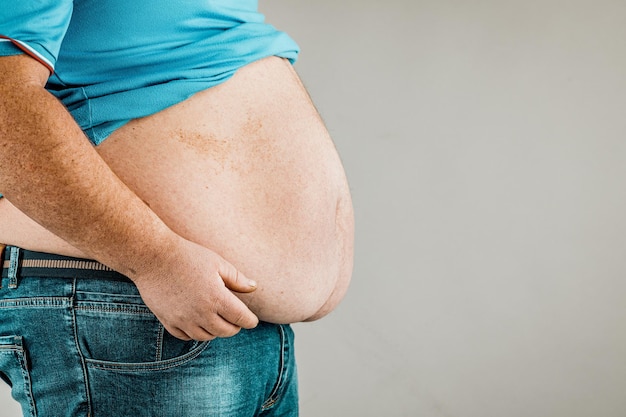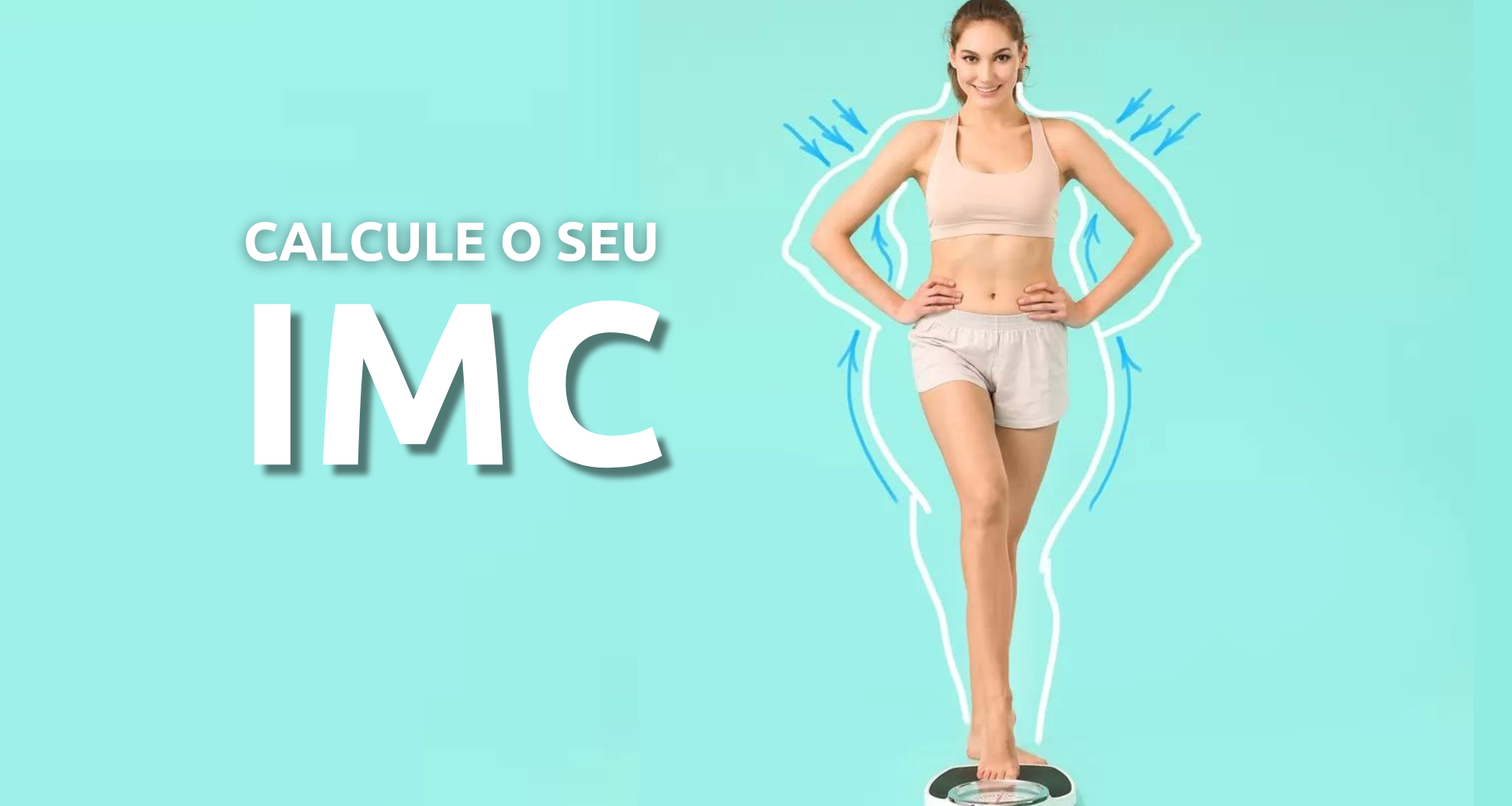Find out your BMI:
Interpreting the BMI result
In the table below we have the classification of BMI values from the WHO (World Health Organization), used for adults aged 20 and over.
| BMI result | Classification |
|---|---|
| Less than <16 | Severe thinness |
| 16 to 17 | Moderate thinness |
| 17 to 18.5 | Light thinness |
| 18.6 to 24.9 | Normal |
| 25 to 29.9 | Overweight |
| 30 to 34.9 | Grade I obesity |
| 35 to 39.9 | Grade II obesity |
| Over 40 | Grade III obesity |
Underweight (thinness)

It may be an indication that you may have a physical or emotional illness, have low muscle mass or are probably not eating well, leading to a lack of absorption of nutrients necessary for the body to function properly and contributing to a weak immune system. and unwell.
One example is calcium, which is vital for healthy bones. A deficiency in this nutrient leads to the risk of developing osteoporosis. Another very important nutrient is iron. A lack of it will lead to the development of anemia, presenting symptoms of tiredness, weakness and so on.
Are you underweight? Improve your diet to promote muscle mass gain and avoid fat gain.
Find out now the amount of daily calories recommended for you using our daily calorie intake calculator, practice exercises that increase lean mass gain and see a general practitioner for evaluation.
Remember the formula: calories gained ARE GREATER than calories burned = Weight gain.
Healthy (normal) weight

Maintaining a healthy weight is one of the pillars of good health and strengthening your immune system. Our tip is to assess the amount of muscle mass and fat percentage in your body for a more in-depth analysis.
Remember the formula: calories gained EQUAL calories burned = Weight loss.
Excess weight (overweight) and obesity

It can characterize an accumulation of fat under the skin and around the organs. Increasing the chances of facing a health problem, such as:
- High blood pressure (hypertension);
- Decrease in life expectancy;
- Type 2 diabetes;
- Stroke (stroke);
- High LDL cholesterol, low HDL cholesterol;
- High triglyceride levels;
- Coronary heart disease;
- Certain types of cancers;
- Bone and joint damage;
- Sleep apnea;
- Breathing problems;
- Chronic inflammations;
- Social problems and low quality of life.
An obese person is more susceptible to the risk of these problems, although overweight people are also at risk.
Improve your diet by reducing calories. To do this, find out now the amount of daily calories recommended for you using our daily calorie intake calculator. Practice exercises that increase calorie burning and speed up metabolism, finally, see a general practitioner, nutritionist and physical trainer for evaluation.
Remember the formula: calories gained ARE LESS than calories burned = Weight loss.
Attention: Muscular people, such as athletes, may have a healthy weight, but receive a BMI result classified as “overweight or obese”, this occurs because muscle is denser than fat. We will explain better in the topics below.
What is BMI?
BMI is the abbreviated acronym for Body mass index. It is the simplest method that provides an indication whether your weight is in a healthy range for your height.
The BMI result is divided into groups (described in the table above) and does not consider the amount of fat, muscle, liquids and other compositions, to actually define whether you have a healthy weight.
How to calculate BMI?
It's a simple calculation, divide the weight (in kg) by the squared height (in meters). The formula is BMI = weight kg/m 2 (height x height).
Example: Weight = 69 kg, Height = 167 cm (1.67 m)
Calculation: 69 ÷ (1.67) 2 = 24,7
For those who are not recommended to calculate BMI
Pregnant women, children, the elderly, people who suffer from high fluid retention in the body, performance athletes and bodybuilders.
This happens because BMI considers the individual's total weight, and not whether the weight is the result of excess fat (unhealthy), muscle (healthy), bone mass or other body compositions.
Performance athletes They have high muscle mass, generating a high BMI, classifying them as “overweight” or “obese”, but in this case they are healthy, as what influenced their weight was the volume of muscle mass and not excess fat.
Elderly or children They may have low lean mass, presenting a lower BMI and resulting in a “healthy weight” even if they have excess fat.
In pregnancy It is lactation, the composition of a woman's body is altered, which is why BMI is not recommended.
The alternative in some cases is to perform a bioimpedance test, as each body composition will be evaluated separately, such as the percentage of fat, muscle mass, bone mass, body water, basal metabolism and even segmented analysis of body members.
- Centers for Disease Control and Prevention. About adult BMI. https://www.cdc.gov/healthyweight/assessing/bmi/adult_bmi/index.html
- World Health Organization. Body mass index – BMI. https://www.euro.who.int/en/health-topics/disease-prevention/nutrition/a-healthy-lifestyle/body-mass-index-bmi
- Australian Government Department of Health. Physical activity and exercise guidelines for all Australians. https://www.health.gov.au/health-topics/physical-activity-and-exercise/physical-activity-and-exercise-guidelines-for-all-australians
- Winter JE, MacInnis RJ, Wattanapenpaiboon N, Nowson CA. BMI and all-cause mortality in the elderly: a meta-analysis. Am J Clin Nutr . 2014;99(4):875-90. doi:10.3945/ajcn.113.068122
- NHLBI. 2013. Managing Overweight and Obesity in Adults: Systematic Evidence Review from the Obesity Expert Panel
- Clinical Guidelines on the Identification, Evaluation, and Treatment of Overweight and Obesity in Adults
- Bhaskaran K, Douglas I, Forbes H, dos-Santos-Silva I, Leon DA, Smeeth L. Body-mass index and risk of 22 specific cancers: a population-based cohort study of 5•24 million UK adults. Lancet. 2014 Aug 30;384(9945):755-65. doi: 10.1016/S0140-6736(14)60892-8. Epub 2014 Aug 13.
- Engstrom G, Hedblad B, Stavenow L, Lind P, Janzon L and Lingarde F. Inflammation-sensitive plasma proteins are associated with future weight gain. Diabetes. Aug 2003; 52(08): 2097-101.
- Marseglia L, Manti S, D'Angelo G, Nicotera A, Parisi E, DiRosa G, Gitto E, Arrigo T. Oxidative stress in obesity: a critical component in human diseases. International Journal of Molecular Sciences. Dec 2014; 16(1):378-400.
- Kasen, Stephanie, et al. “Obesity and psychopathology in women: a three decade prospective study.” International Journal of Obesity 32.3 (2008): 558-566.
- Luppino, Floriana S., et al. “Overweight, obesity, and depression: a systematic review and meta-analysis of longitudinal studies.” Archives of general psychiatry 67.3 (2010): 220-229.
- Han, T. S., et al. “Quality of life in relation to overweight and body fat distribution.” American Journal of Public Health 88.12 (1998): 1814-1820.






